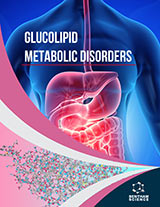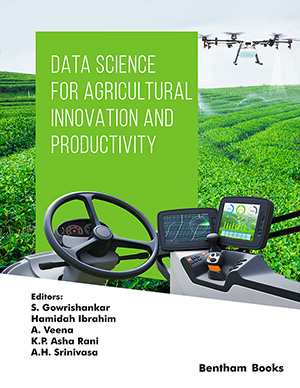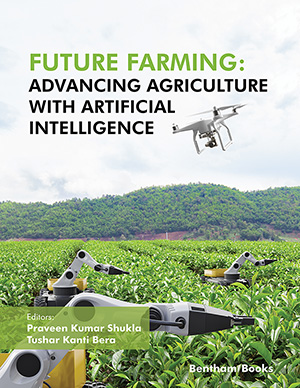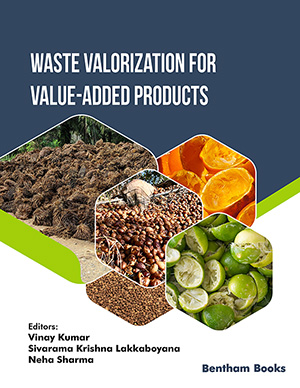
Abstract
Aims: The present study aims to investigate the current scenario of utilization and importance of medicinal plants used by traditional Vaidyas. This study also provides information about the views and awareness of the current generation towards ayurvedic knowledge, which in turn explains the decline of traditional healthcare practices.
Background: Ayurvedic medicine is one of the oldest and most traditional healthcare systems in India. There is limited documentation available regarding the information of traditional medicinal uses of plants even though various rural folks and elders have long been using plant-based formulations for curing human ailments. Hence, there is an urgent need to document this traditional knowledge to endorse the Ayurveda or Indigenous medicinal system before such valuable knowledge becomes inaccessible and extinct.
Objective: The present study was carried out to profile the current status of medicinal plants used by Traditional Vaidya’s/practitioners/locals, and discuss the status of Ayurveda and indigenous systems in the Northern states of India i.e., Haryana and Rajasthan.
Methods: To study currently available medicinal plants used by traditional Vaidyas in Northern states of India such as Haryana and Rajasthan, a survey among 50 Vaidyas of each state was undertaken. Information was gathered through interview and questionnaires consisting of 20 questions regarding their knowledge, expertise, targeted ailments, herbal formulations, and preservation techniques.
Results: According to the collected information, these Vaidyas have almost 4 to 40 yrs. of experience and acquired their knowledge in a variety of ways, including from academic institutions or their ancestors. By feeling the pulse in the wrist, these Vaidyas were able to diagnose ailments associated with the three doshas (Vata, Pitta, and Kapha) with medical precision via sensing the wrist's pulse. Different illnesses associated with kidney, lungs, digestive system, leukosis, diabetes, blood pressure etc. were treated by these traditional Vaidyas. In addition to prescribing medicines, Vaidyas carefully observe the patient's routine, physical health and their age group for better medication. Several indigenous medicinal herbs such as Ashwagandha, safed musli, gokhru, garmunda, bawli ghans, giloy, triphala, ginger, patthar chatta, Aloe vera, Stevia, and many other herbs are being used by these traditional Vaidyas for their herbal formulations.
Conclusion: This survey highlights Ayurveda and its use of plants in the field of medicine, through validation based on knowledge of traditional Vaidyas. This article also highlights the indigenous system and some important Indian medicinal plants of Haryana and Rajasthan and their therapeutic use in daily life. This survey enlightens the traditional Vaidyas and their knowledge of the Ayurveda medicinal system. This step might strengthen the validity of these products and provide a lead to target new formulation preparations. Many high-profile formulations could be prepared in the future, if most of these reputed traditional Vaidyas get organized.
Keywords: Traditional, Ayurvedic medicines, Indigenous, Vaidya system, Herbal, Medicinal plants. Article
[http://dx.doi.org/10.17348/era.3.0.267-278]
[PMID: 27840524]
[http://dx.doi.org/10.4103/2249-4863.192322] [PMID: 27843823]
[http://dx.doi.org/10.1016/S0140-6736(96)07135-8] [PMID: 8973437]
[http://dx.doi.org/10.1016/S0140-6736(01)06630-2] [PMID: 11705580]
[http://dx.doi.org/10.1017/S1479262116000368]
[http://dx.doi.org/10.1017/S174217050900252X]
[http://dx.doi.org/10.1016/j.jep.2005.05.047] [PMID: 16154303]
[http://dx.doi.org/10.1186/1746-4269-6-4] [PMID: 20109179]
[http://dx.doi.org/10.4103/2249-4863.197257] [PMID: 28217577]
[http://dx.doi.org/10.1111/j.1365-2354.2008.00917.x]
[http://dx.doi.org/10.3923/ijp.2011.198.205]
[http://dx.doi.org/10.1089/acm.2005.11.385] [PMID: 15992219]
[http://dx.doi.org/10.1016/j.eujim.2014.12.007]
[http://dx.doi.org/10.1007/s11101-019-09629-9]
[PMID: 18072542]
[http://dx.doi.org/10.2174/1573401316666200225122210]
[http://dx.doi.org/10.1016/j.jep.2015.12.055] [PMID: 26727646]
[http://dx.doi.org/10.5455/jice.20140627123443] [PMID: 26401358]
[http://dx.doi.org/10.7439/ijbr.v2i1.79]
[http://dx.doi.org/10.4103/0976-500X.92512] [PMID: 22368416]
[http://dx.doi.org/10.1007/s00709-014-0613-4] [PMID: 24510215]
[http://dx.doi.org/10.1016/j.plaphy.2019.03.040] [PMID: 31035173]
[http://dx.doi.org/10.1016/j.indcrop.2020.112508]
[http://dx.doi.org/10.1007/s10725-019-00480-8]
[http://dx.doi.org/10.2174/138920109789542084] [PMID: 19751181]
[http://dx.doi.org/10.1155/2019/2418785]
[http://dx.doi.org/10.1007/s40011-017-0924-2]
[http://dx.doi.org/10.1155/2016/9015802] [PMID: 26880927]
[http://dx.doi.org/10.1007/s11101-005-2833-x]
[http://dx.doi.org/10.1016/j.hermed.2015.01.003]
[http://dx.doi.org/10.1016/0031-9422(89)80230-4]
[http://dx.doi.org/10.1093/ecam/nem044] [PMID: 18955211]
[http://dx.doi.org/10.1007/s11738-009-0388-y]
[http://dx.doi.org/10.1016/S0367-326X(00)00318-X]
[http://dx.doi.org/10.1016/S0378-8741(02)00088-0] [PMID: 12127232]
[http://dx.doi.org/10.1016/0378-8741(84)90077-1] [PMID: 6482481]
[http://dx.doi.org/10.1016/0378-8741(87)90041-9] [PMID: 3497308]
[http://dx.doi.org/10.1016/j.foodchem.2006.10.048]
[http://dx.doi.org/10.1016/j.jep.2003.08.004] [PMID: 14611887]
[http://dx.doi.org/10.1089/109662003322233495] [PMID: 12935320]
[http://dx.doi.org/10.1021/np9902744]
[http://dx.doi.org/10.5530/pj.2019.11.131]
[http://dx.doi.org/10.1016/S0378-8741(02)00342-2] [PMID: 12686434]
[http://dx.doi.org/10.1016/S2222-1808(13)60049-3]
[http://dx.doi.org/10.1080/14786419.2015.1092148] [PMID: 26463825]
[http://dx.doi.org/10.1515/JBCPP.2010.21.1.93] [PMID: 20506691]
[http://dx.doi.org/10.1007/s11655-014-1984-2] [PMID: 25491539]
[http://dx.doi.org/10.1016/j.foodchem.2008.01.071] [PMID: 26050007]
[http://dx.doi.org/10.1080/14786410601124664] [PMID: 17763100]
[http://dx.doi.org/10.1146/annurev.en.35.010190.001415] [PMID: 2405771]
[http://dx.doi.org/10.1155/2016/7382506] [PMID: 27034694]
[http://dx.doi.org/10.1016/j.jep.2011.01.046] [PMID: 21296646]
[http://dx.doi.org/10.1016/j.jep.2010.01.025] [PMID: 20080167]
[http://dx.doi.org/10.4103/0973-7847.70918] [PMID: 22228961]
[http://dx.doi.org/10.1186/1756-0500-5-158] [PMID: 22433844]
[http://dx.doi.org/10.1211/0022357991772312] [PMID: 10344633]
[http://dx.doi.org/10.1016/j.jep.2005.01.025] [PMID: 15848014]
[http://dx.doi.org/10.1016/S0367-326X(99)00135-5] [PMID: 10727819]
[http://dx.doi.org/10.1016/j.pnpbp.2005.11.019] [PMID: 16443316]
[http://dx.doi.org/10.1016/0308-8146(90)90159-2]
[http://dx.doi.org/10.1016/j.jep.2004.01.016] [PMID: 15120462]
[http://dx.doi.org/10.1002/ptr.2347] [PMID: 18167043]
[http://dx.doi.org/10.1016/S0378-8741(97)00086-X] [PMID: 9406896]
[http://dx.doi.org/10.15406/jbmoa.2018.06.00192]
[http://dx.doi.org/10.1016/S2221-1691(12)60524-3]
[http://dx.doi.org/10.4172/2167-0412.1000161]
[http://dx.doi.org/10.1016/j.foodres.2011.02.008]
[http://dx.doi.org/10.1089/acm.2009.0604] [PMID: 20932194]
[http://dx.doi.org/10.1016/j.biotechadv.2008.05.004] [PMID: 18579331]
[http://dx.doi.org/10.1111/jpn.12360] [PMID: 26150062]
[http://dx.doi.org/10.1016/0378-8741(82)90038-1] [PMID: 7035750]
[http://dx.doi.org/10.1016/j.indcrop.2008.01.001]
[http://dx.doi.org/10.1016/S0961-9534(00)00019-2]
[http://dx.doi.org/10.1016/S2221-1691(11)60175-5]
[http://dx.doi.org/10.1300/J175v01n01_05]
[http://dx.doi.org/10.1016/S2222-1808(14)60617-4]
[PMID: 25362591]
[http://dx.doi.org/10.3109/13880200903241861] [PMID: 20645741]
[http://dx.doi.org/10.1007/s12291-010-0039-5] [PMID: 21731203]
[http://dx.doi.org/10.2306/scienceasia1513-1874.2010.36.349]
 22
22 1
1



























